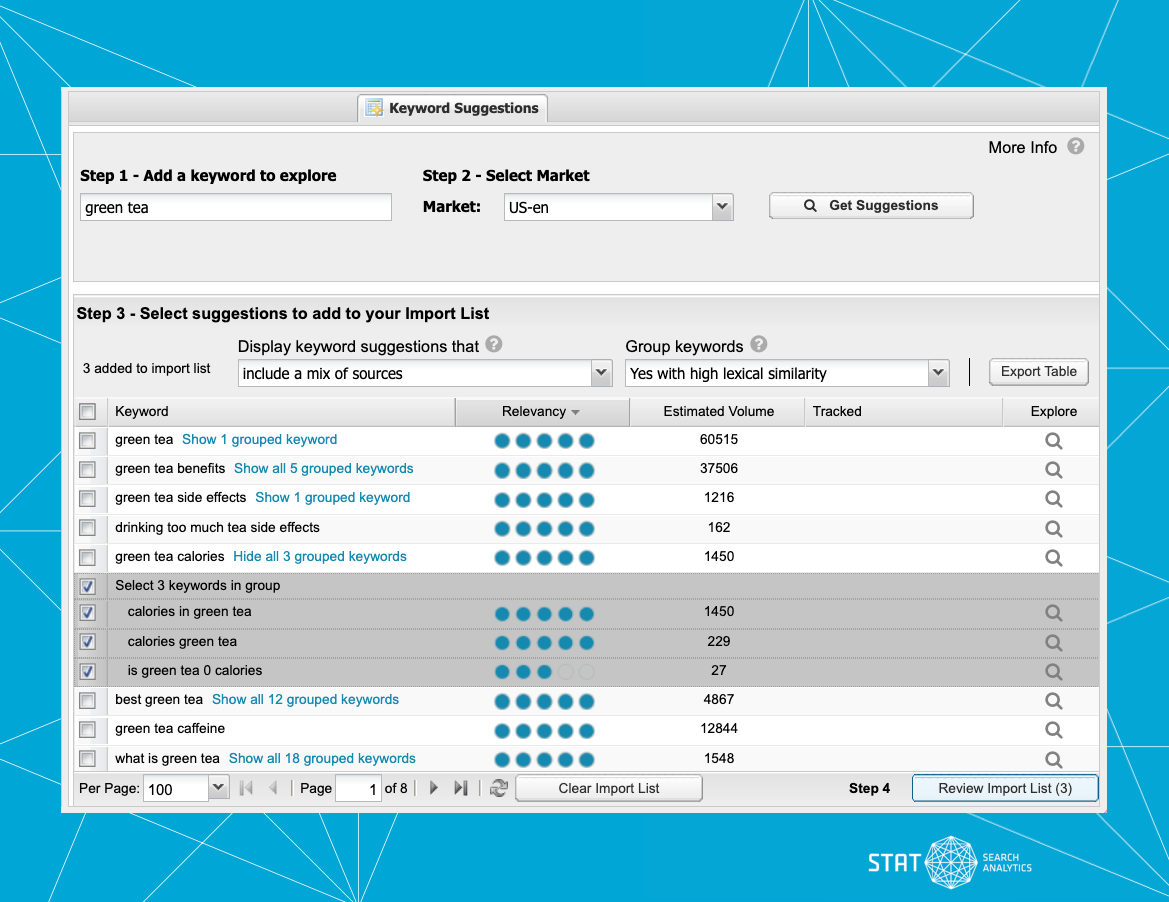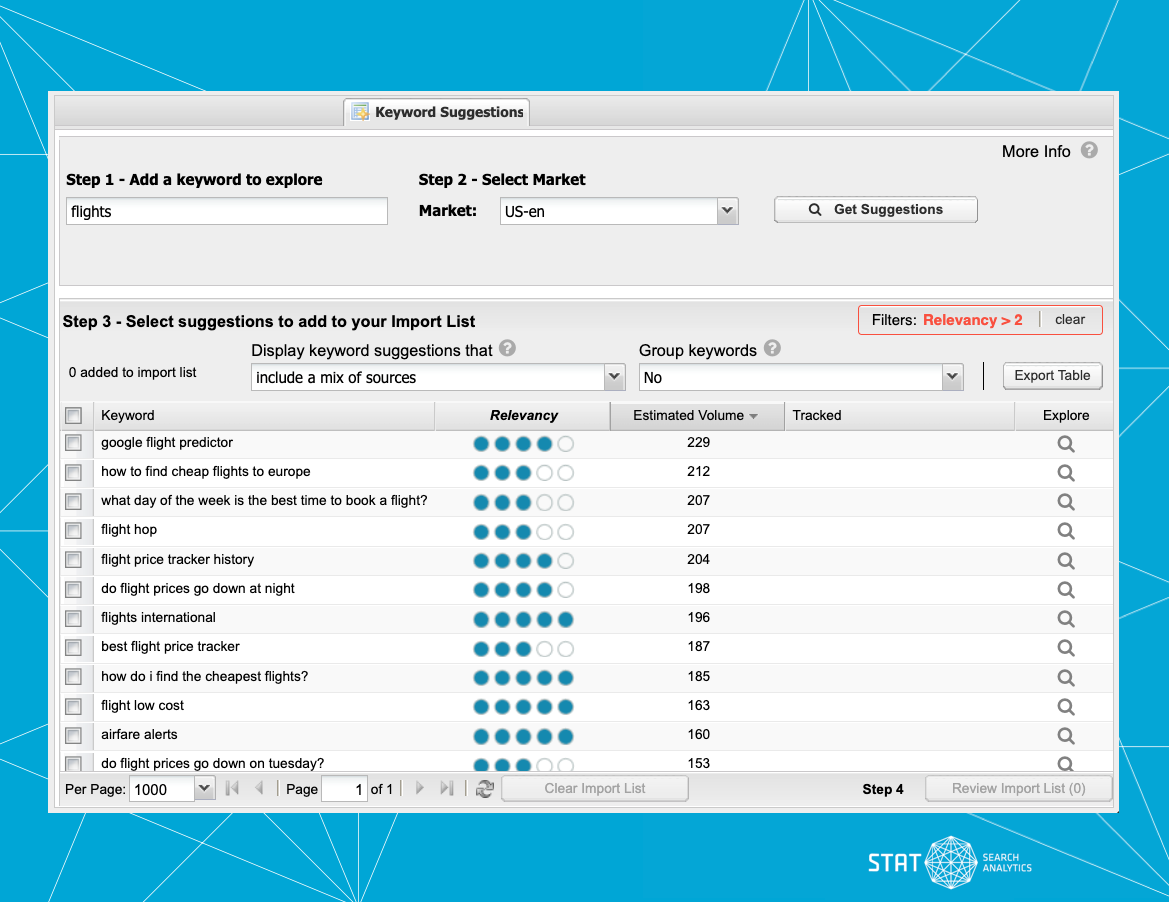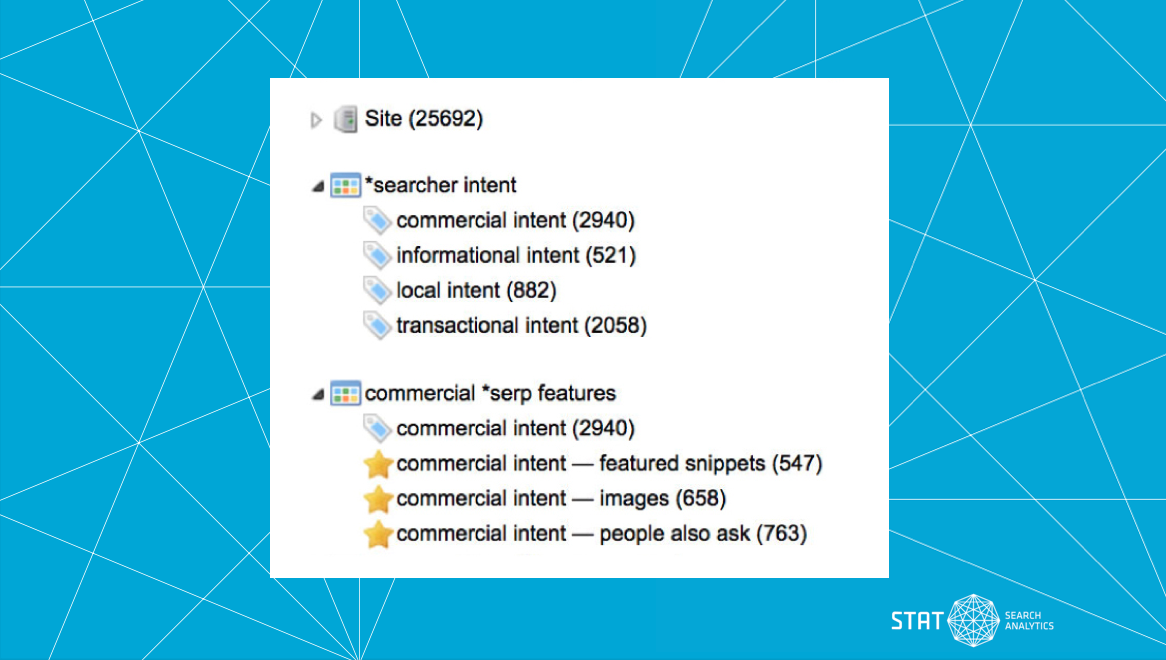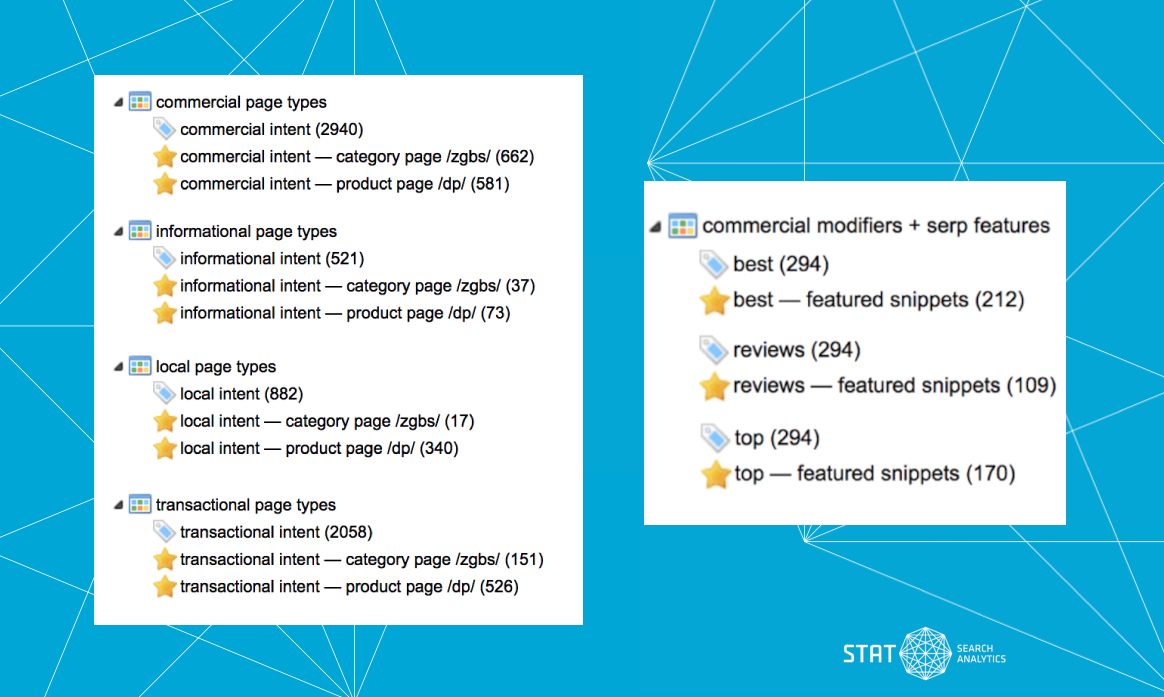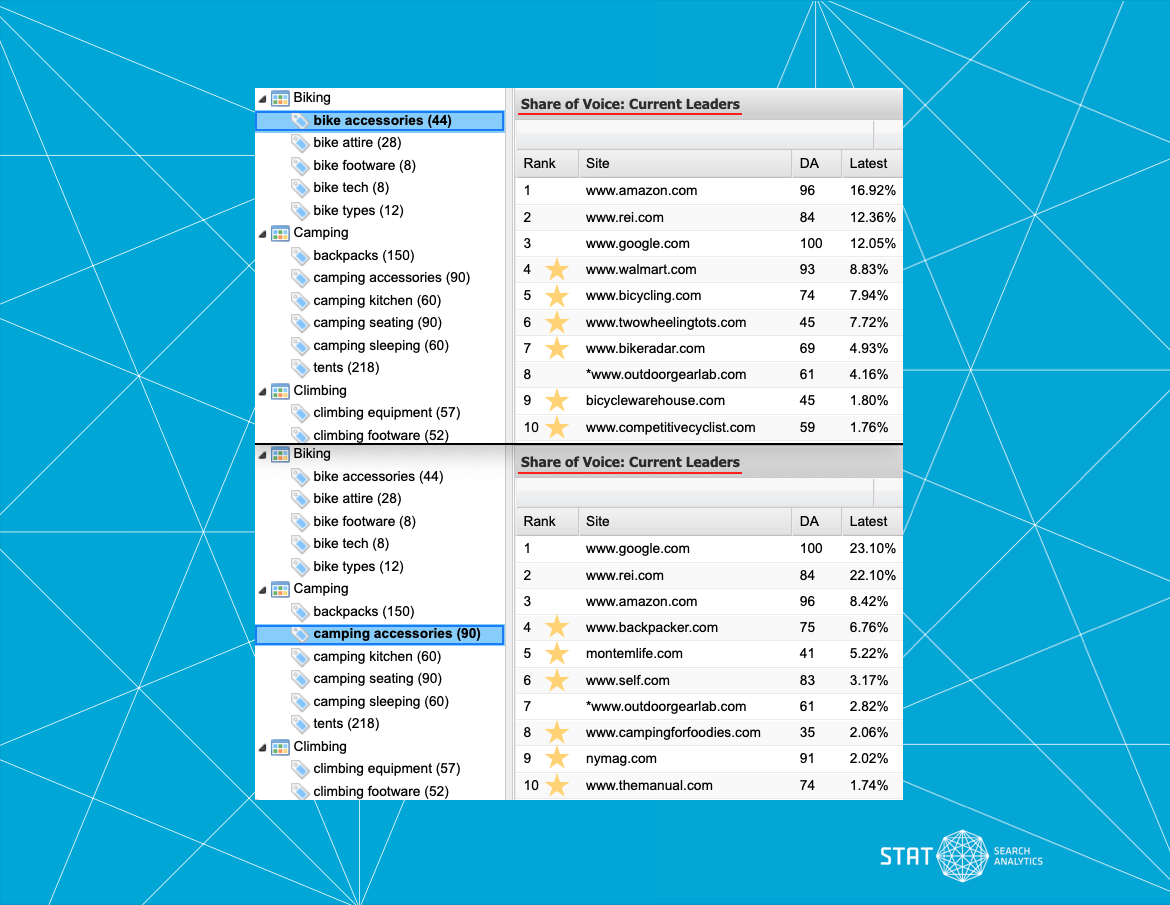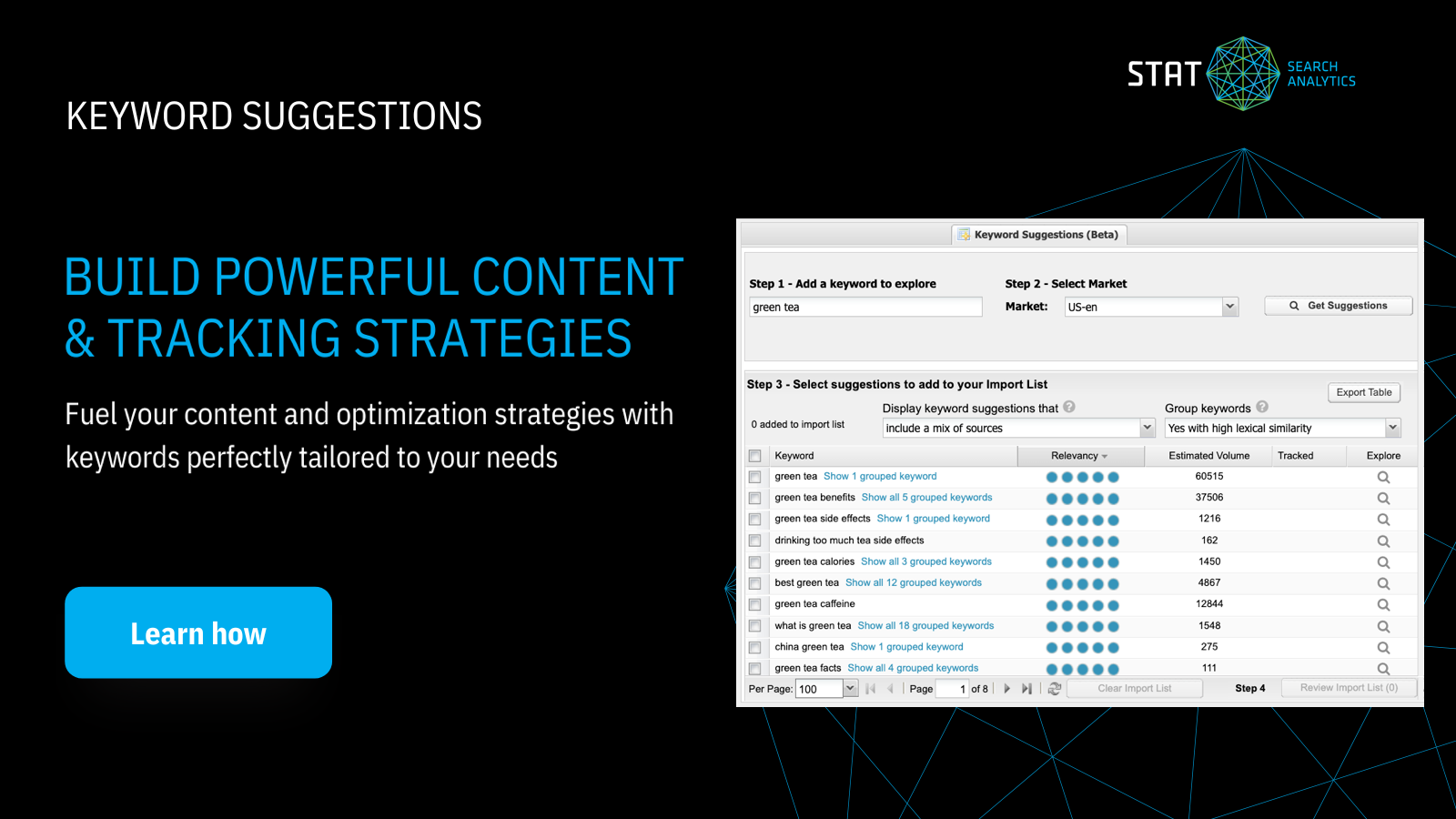Learn how to choose the keywords needed to show up on the SERPs, outrank the competition, and hit your most challenging KPIs.
Given that the first 5 organic results on the SERP account for 67.60% of all clicks, it’s no wonder that SEOs are racing to beat their competitors to those top spots. And for many, an SEO strategy that’ll outrank the competition starts with a good ol’ dose of keyword research.
While it’s a foundational piece of the SEO puzzle, the work of actually choosing which keywords are relevant to your business can be a difficult process that requires a lot of intention. Thankfully, we’ve broken it down into six key steps to help you navigate and standardize this task:
- Get rid of obviously irrelevant terms and misspelled variants
- Prioritize a healthy mix of short- and long-tail keywords
- Take a deep dive into search intent
- Take cues from your competitive landscape
- Phone an advanced SEO friend
- Refresh on a regular basis
When you’ve done your keyword research right, you’ll know exactly which queries your audience actually searches for — the insight needed for SEO and content strategies that help you show up on the SERPs, outrank the competition, and hit your strategic KPIs.
The pre-work: Build out your keyword list
Of course, before you can be really intentional about which keywords you want to track for the long haul, you first need a list of keywords to work with. And when you’re juggling a ton of different products, services, locations, and verticals, you need to be able to scale that keyword list up with both speed and efficiency.
The easiest way to do this is to start small. Put together a short list from your initial research on offerings, audiences, high-performing competitor content, client meetings, website goals, campaigns in the works, etc. Then take those foundational keywords and head straight to the nearest keyword research tool — like STAT’s Keyword Suggestions feature — to multiply them.
Keyword Suggestions in STAT
Build out comprehensive lists from just a few key terms.
6 steps for choosing your ideal keywords
Once you’ve turned 100 keywords into 1,000, or even 100,000 keywords, it’s time to start panning for gold.
“There’s a huge amount of skill, nuance, and experience that comes into keyword research… my hope is that we can get into the habit of focusing on those bits, and not just screaming into the void spreadsheet.” — Tom Capper, How to Do Better, Lazier Keyword Research
Here are six tried and tested steps for choosing the keywords that are going to take you all the way to the top of the SERPs.
Step 1: Get rid of obviously irrelevant terms and misspelled variants
When you’re creating keyword lists at scale, wildly irrelevant terms will always find a way in.
This is because most keyword suggestion tools (including STAT’s) pull from a mix of sources like the “People also ask” box and related searches on the SERP, and Google likes to account for all kinds of queries — including typos and tangents. For example, if you’re shoe manufacturer Bravo Shoes, you might find yourself looking at a few keywords related to the Bravo network’s shows.
Related searches on the SERP
Google may slip in related terms meant for other keywords if they think a typo might exist.
You may also have stopped by a different kind of keyword generator when building out your list, one that creates various misspellings or constructs bizarre keyword combinations. But unless you have a strange brand name or an incredibly tough to spell product, take it from Moz (and STAT) Search Scientist Tom Capper that “the priority should be to capture all the relevant intents of a keyword, rather than all the irrelevant variants.”
Don’t do this anymore
There’s no need for this.
So, as your first (and easiest) step, you’re going to filter out the keywords that simply aren’t for you and turf all the ridiculous typos.
Step 2: Prioritize a healthy mix of short- and long-tail keywords
As a general rule, a keyword list with a good mix of short- and long-tail terms is desirable. The right balance will give you opportunities for both quick wins and long-haul goals you can work towards.
- Short-tail keywords, or head terms, are just one or two words that typically produce a broad array of results and pack a big search volume punch.
- Long-tail keywords comprise of three or more words, and are phrases that produce a much more focused search result, and often have a lower search volume.
If you only prioritize high-volume keywords, you’ve saddled yourself with a challenging and limiting SEO strategy. For example, while the head term [flights Spain] may entice you with its impressive search volume, it will be an extremely competitive term and therefore harder for you to rank for.
Ranking for a long-tail phrase, such as [cheapest month to fly to Spain], would be the easier option here. And not only will there be less competition, but the search is far more specific, giving you a much better idea of the searcher’s intent and what content they’re hoping to find.
If you need to add more long-tail keywords to your list, head back to the Keyword Suggestions tool in STAT and filter for mid-relevancy terms with low-to-mid search volume. This will help uncover the long-tail, less competitive niche queries that are also worth tracking and optimizing for.
Don’t forget the long-tail keywords
Filter for mid-relevancy, mid-search volume keywords to surface long-tail, less competitive niche queries.
Just remember that search volume is both subjective and relative to your industry or vertical, so you’ll need to decide what constitutes “low” for you. (Though every SEO should kick any zero search volume keywords to the curb.)
Step 3: Take a deep dive into search intent
Next you’ll want to vet your keywords from a search intent perspective.
Search intent is the motivating factor behind any given query, and when you uncover this “why” behind your target audience’s searches, it’s like stepping right into their shoes.
This is why customer research — conducting interviews, listening to sales calls, reading reviews — is so essential. You need to understand what your audience is saying so that not only can you track the right keywords and deliver the right content, but also use the language they’re familiar with.
“Since Google’s primary ranking factors are relevance, authority, and user satisfaction, it’s easy to connect the dots and see how improving your keyword targeting to mirror search intent can improve your overall rankings.” — Dawn Macri, Search Intent and SEO: A Quick Guide
As a general rule, keywords fall into five types of search intents:
Informational search intent
This is when a searcher is looking for more general information on a specific topic or problem. Queries like [is travel insurance important], [tv screen types], and [different kinds of coffee beans] are all examples of informational searches.
Commercial search intent
The searcher has identified a solution and is starting their research into the different choices available to them. This type of search frequently involves a comparison between products, prices, and/or brands. For example, queries like [compare travel insurance], [flat screen tv reviews], or [best coffee grinders] are all investigating possible purchase options.
Transactional search intent
This type of query demonstrates the searcher’s intent to make a purchase. Keywords like [affordable travel insurance], [flat screen tvs on sale], and [coffee grinder cost] are all indicators of a strong intent to buy.
Local search intent
Often considered a subset of transactional intent, this search demonstrates an intent to do or buy something locally. Searches such as [td bank near me], [samsung tv in store pickup], and [coffee grinders in brompton] show this desire to find location-based information.
Navigational search intent
Also often a subset of transactional intent, this search is looking for a specific website. Searchers might be unsure of the exact URL, so queries such as [td bank login], [samsung], and [walmart coffee grinders online] are all examples of this navigational intent.
By bucketing your keywords by search intent, you’ll be able to see how well each category is represented (do any need more keywords?) and which keywords might not reflect the language your audience would use at each stage of the intent funnel (remember your customer research from earlier).
Just note that search queries can fall under more than one type of intent, and that the keywords that occupy each intent category can also be highly subjective. The bottom line is that intent should be structured and classified in a way that makes sense to you and your business.
Once you’ve got your keywords grouped and audited, we recommend tracking these as individual segments. Many buyer journeys start and stop within a search engine, so this will help you better track your searchers from interest to purchase and uncover where you need to focus your efforts.
Search intent keyword segments
Filter keywords into top-level search intents and then dig into the SERP features that show up in each category.
And the more granular you can continue to get with your search intent keyword segmentation, the more specific the insights will be. For example, if you’re using STAT, you can set up segments that will:
- Surface the SERP features that appear for each search intent category.
- Show which pages — blog posts, category pages, review pages, product pages — rank for each intent.
- Track the performance of keywords that have certain intent modifiers, like “best” for commercial intent and “near me” for local intent.
- Find the SERP feature opportunities within those intent modifier segments.
Create granular search intent keyword segments
Track the types of pages that rank at each stage of the intent funnel, as well as intent modifiers and the SERP features that appear for them.
With this level of granular insight, you can be very intentional with your optimizations. For example, you may discover that videos appear most often for your informational queries, images are most prevalent for your commercial queries, and FAQs prefer your transactional queries, giving you a clear SERP feature mandate for each step of the intent funnel.
Or you may also find that, despite being originally optimized for transactions only, your product pages actually rank well for your informational keywords, and that perhaps the answer to better conversion rates is to put more top of funnel type information directly onto those pages.
If you’d like to read more about what a search intent tracking strategy in STAT could look like, start with this short guide.
Step 4: Take cues from your competitive landscape
Next it’s time to evaluate your keywords by taking a peek at the competition.
Since Google works very hard at matching the right content to the right query, looking at the competitors that turn up for your keywords will let you know whether you’re on the right track with them.
In STAT, our share of voice metric provides an unbiased view of who’s actually competing for your SERPs and an instant answer to who owns the most visibility for a given keyword set — whether it’s your whole site, custom segments, or even a single keyword.
Top 10 share of voice competitors
STAT’s share of voice metric provides an unbiased view of who’s actually competing for your SERPs and an instant answer to who owns the most visibility for a given keyword set.
Similar to search intent, we recommend a highly segmented approach to your competitor analysis as you’ll unlock far more detailed insights.
Take this online outdoor retailer for example. When we look at the top 10 share of voice leaders for both bike and camping accessory keywords, we see that these segments only share four competitor sites — Amazon, REI, GearLab, and Google. This means that each keyword set has six unique competitors to worry about — that’s 12 competitors and we’ve only looked at two keyword segments. If we had kept this analysis at the site-level, we would have missed this nuance and the opportunities that come with it.
Share of voice
Smaller keyword segments surface more nuanced competitor insight and the opportunities that come with it.
Next, you’ll want to investigate what kinds of competitors you’re up against:
- Business competitors. These are your direct competitors — they do what you do or sell what you sell.
- Relevant search competitors. These sites don’t steal your business but they do siphon views away from your content. For example, if you sell bike helmets, they may be a review site for cycling fanatics (and maybe you can get them to write about you).
- Untouchable SERP giants. These would be sites like Google, Wikipedia, YouTube, and Twitter. Your Twitter game may land your account on the SERP, but clicks are still going to Twitter — so it’s best to put these sites in a league of their own.
- Non-relevant search competitors. These competitors don’t run in any of your circles and simply take up space on your SERPs.
As you examine your keyword competitors, you’ll want to see a lot of sites from the first and second categories (the untouchable SERP giants are all but inevitable). If, however, you’re finding keywords with SERPs full of random, irrelevant websites, you can take this as a hint from Google that those keywords aren’t something your audience searches for — and so you don’t need to track them.
You also want to be taking keyword ideas directly from your competitors. Look to their high-performing content to see what other queries you can pull onto your list.
Once you’re happy with the keywords you’re tracking, you can use this competitive angle to help prioritize your SEO efforts and provide inspiration for your content. For example, is there opportunity for you to cash in on the keywords that your main competitors are seemingly ignoring? On SERPs where your competitor has the edge, can you reverse-engineer what’s resonating there for your own content?
Step 5: Phone an advanced SEO friend
Choosing the right keywords to track can feel like a daunting task, and for those newer to the challenge, a sometimes mind-boggling process to navigate. Thankfully, there’s nothing that the SEO community loves more than to lend a helping hand.
If you’ve hit a wall with your keyword research, leaning on SEO experts and others in the industry could be the magical, time-saving next step you need. Plus, any opportunity to connect with peers, learn new skills, and share best practices is one worth taking — there’s always more than one way to do most things SEO, so it’s better to have more perspectives than fewer.
“I appreciated how much STAT wanted to invest in our success, so I had some really awesome planning strategies to walk through how they could make us even better.” — Shawn Huber, Director of SEO, Trellis Research
Step 6: Refresh on a regular basis
With an ever-changing SERP landscape and a wealth of information to stay on top of, it’s especially important to keep your tracking strategy up to date. Over time, a static keyword set can limit your reach and hinder your ability to stay competitive on the SERPs.
Ideally, updating your keyword list and going through the steps outlined above on a monthly or quarterly basis will ensure you’re not missing opportunities. Of course, if you’re in an industry with novel topics or more frequent trends, you’ll want a keyword refresh cadence to match.
Choosing a rank tracker that has a built-in keyword research tool (like STAT’s Keyword Suggestions) will help you streamline this work. It will also keep keyword research top of mind so that you’re continuously adding new keywords into the mix, making the official audits and refreshes less daunting.
Set yourself up for success with better keyword research
The path from picking keywords to sitting at the top of the SERPs isn’t easy, but when you dedicate the time and intention to the beginning part of the journey, you’re setting yourself up for success beyond great keyword research.
Keyword research is so foundational because, when done properly, it creates a seamless transition into the kind of well-structured tracking strategy that produces precise insight for laser-focused tactics.
When you’ve kept your business goals at the forefront, mastered search intent, scrutinized your competitors, and even leveraged expert support from industry professionals, you’ve got all the right pieces in place to do your most ambitious SEO.
Build out comprehensive keyword lists with STAT
With a strong keyword foundation in place, you can introduce new product lines, extend your brand reach, and draw up competitive game plans with more confidence.
